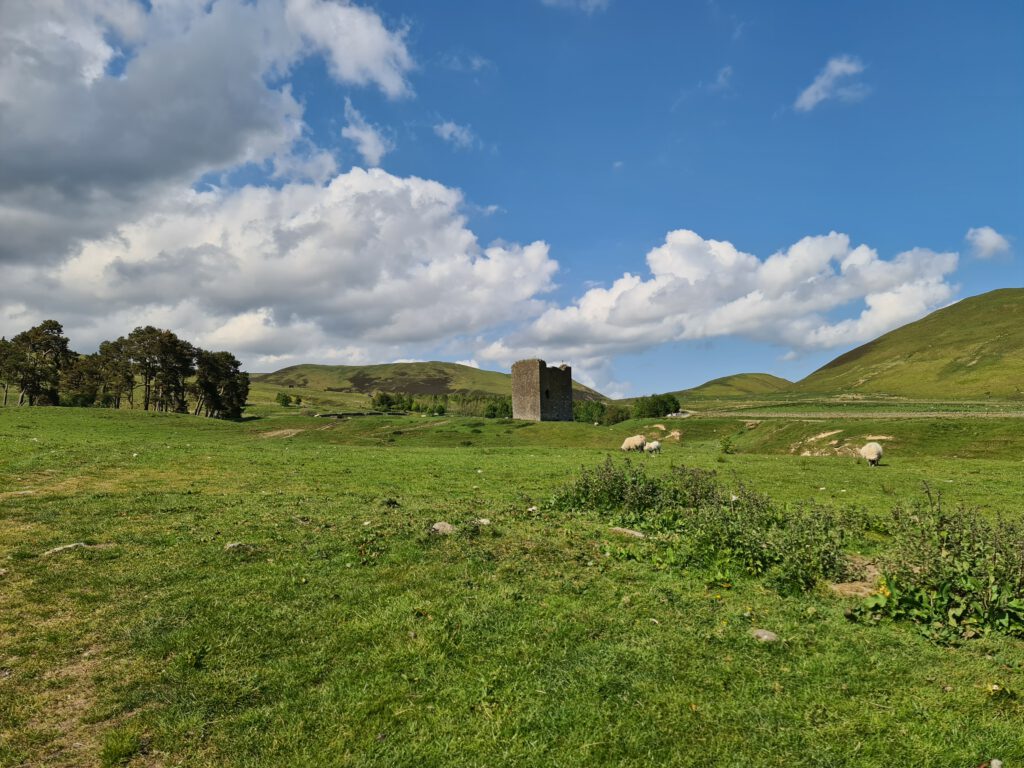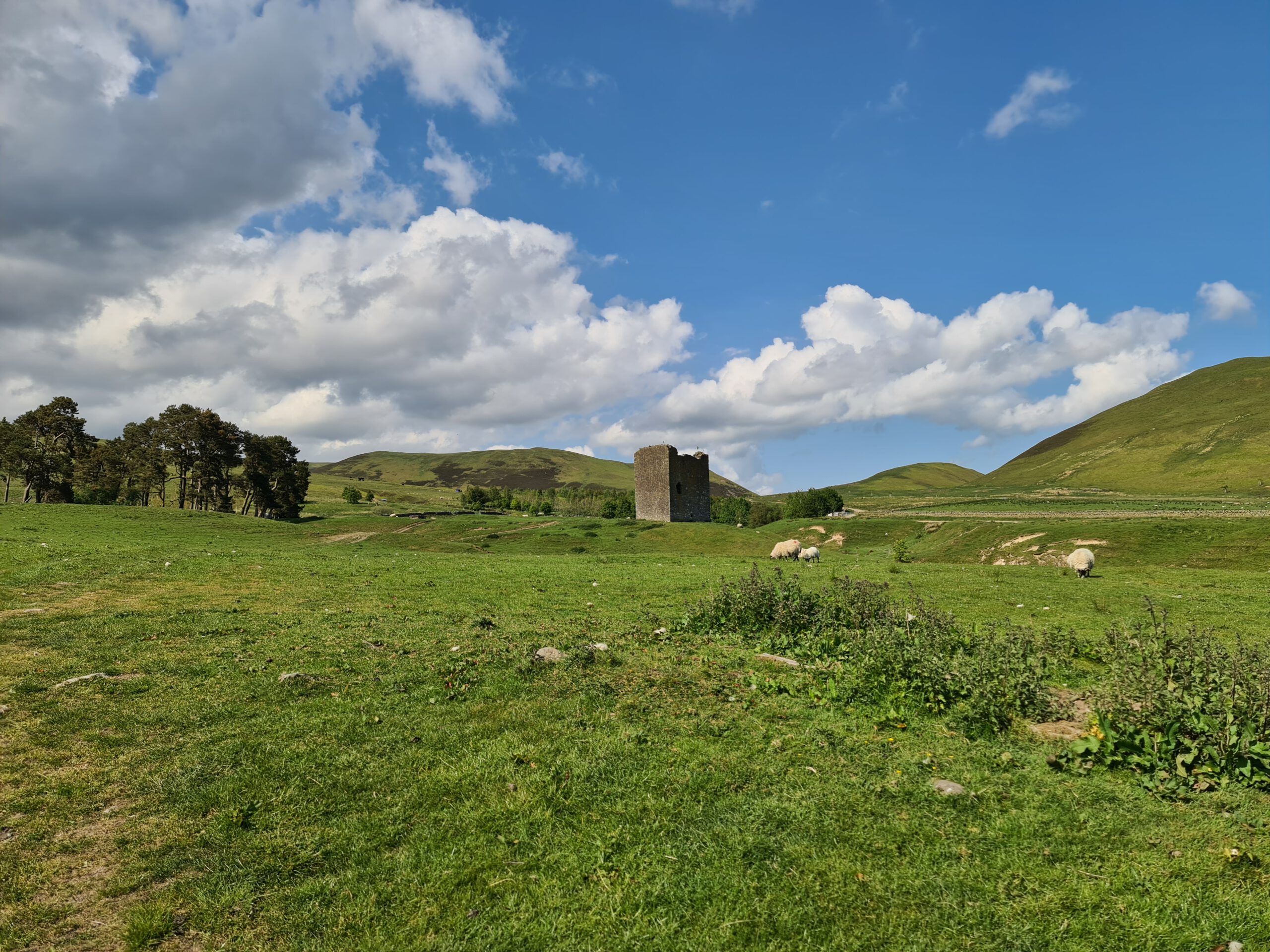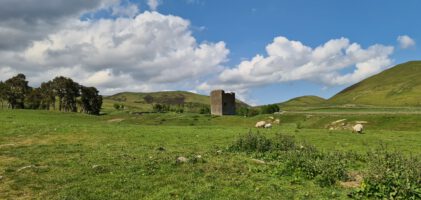Location: near St Mary’s Loch, Yarrow Valley, Scottish Borders, Lowlands of Scotland
kind of castle: peel tower
today: open to the public, no floors left
public transport: buses from Selkirk
scheduled monument: yes
managed by: Philiphaugh Estate Trust
entrance fee: £ 0
opening times: 24/7
directions: Dryhope Tower – Google Maps
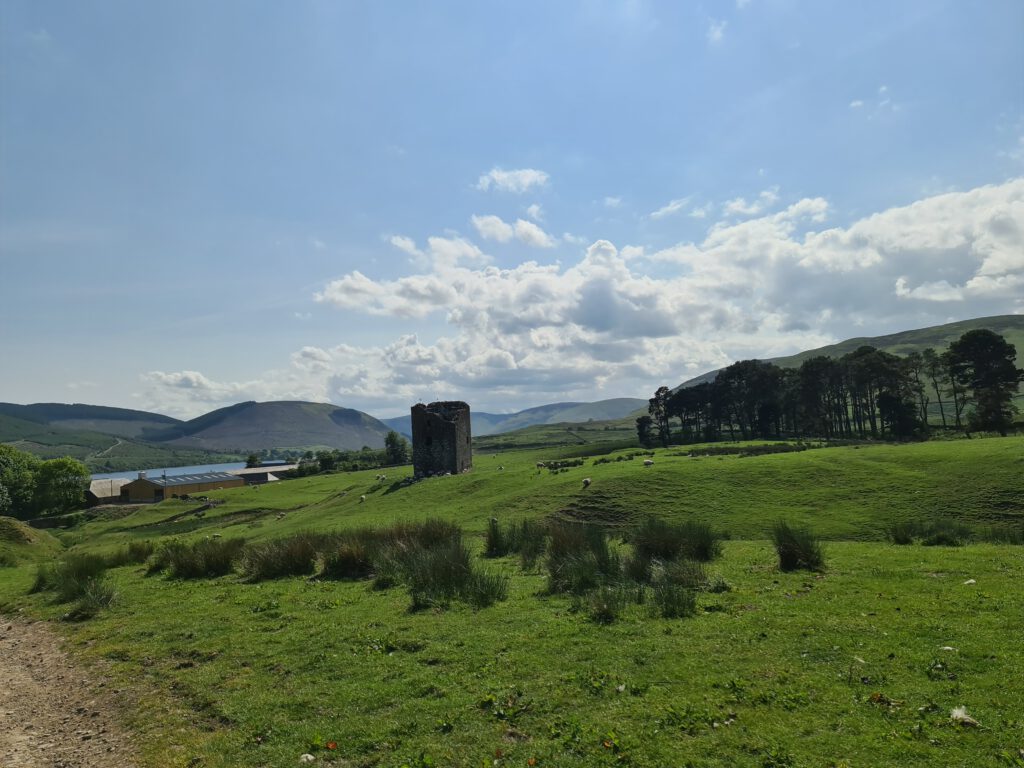
Located approximately right in the middle between Moffat and Selkirk, both royal burghs, Dryhope Tower is often missed even with folks enjoying a day at St Mary’s Loch, yet the site is definitely worth stopping at. Originally having been protected by nature, with Dryhope Burn and Kirkstead Burn around it, the tower was built out of local stone and once four storeys high and surrounded by protective earth work enclosing further smaller buildings alongside the tower.
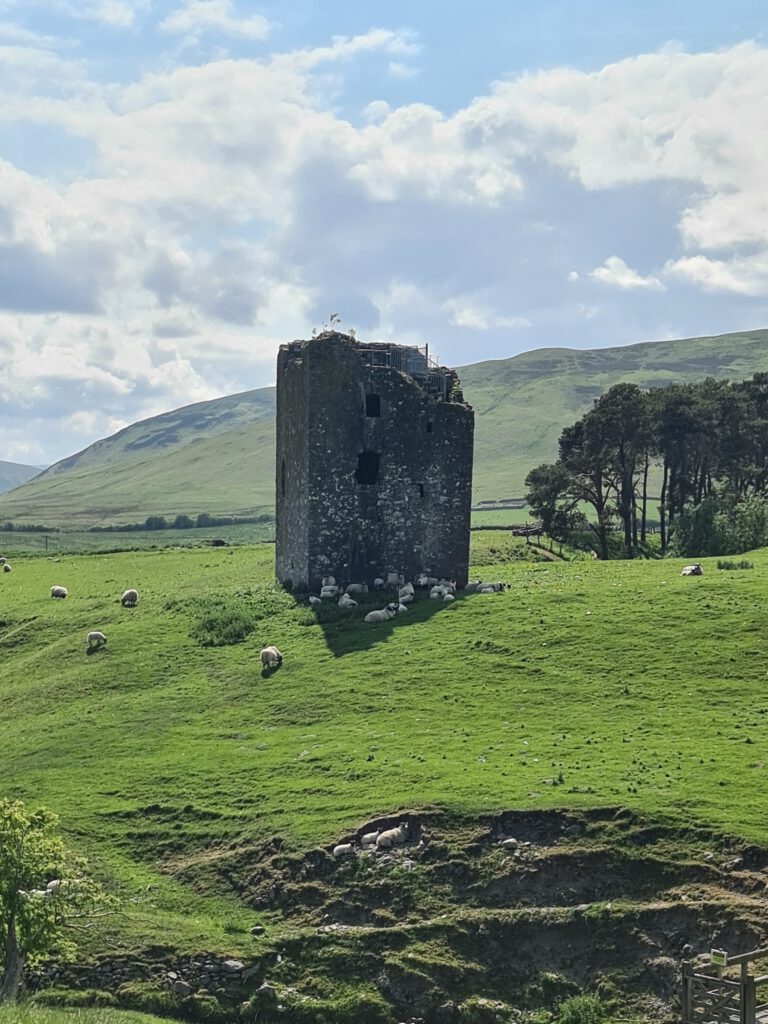
Today’s structure was built during the 16th century, with maybe an earlier structure at the same place before then, the tower was erected some time after 1535 by the Scotts of Dyrhope. Over the years it passed into the hands of the Scotts of Harden, through the marriage between the infamous Mary Scott aka ‘Flower of Yarrow’ and Walter Scott of Kirkhope, known as the notorious Border Reiver ‘Auld Wat’, in 1576. The Dryhope born Mary and Wat were ancestors of Sir Walter Scott the famous writer.

After being involved in a plot against James VI the tower of Dryhoip (different version of the name) got destroyed by the associates of the king in 1592. Many of the local properties, owned by the Scotts of Haden were sacked and suffered the same faith as Dryhope. However, by 1613 the tower had been rebuilt but sadly fell into decay some time during the latter part of the 17th century.
The 17th century was also the time when the tower passed into the senior brand of the Scott family, the Scotts of Buccleuch who were also the Dukes of Buccleuch by that time. Today it belongs to the Philiphaugh Estate Trust who try to do everything to keep the tower stabile and open to the public.
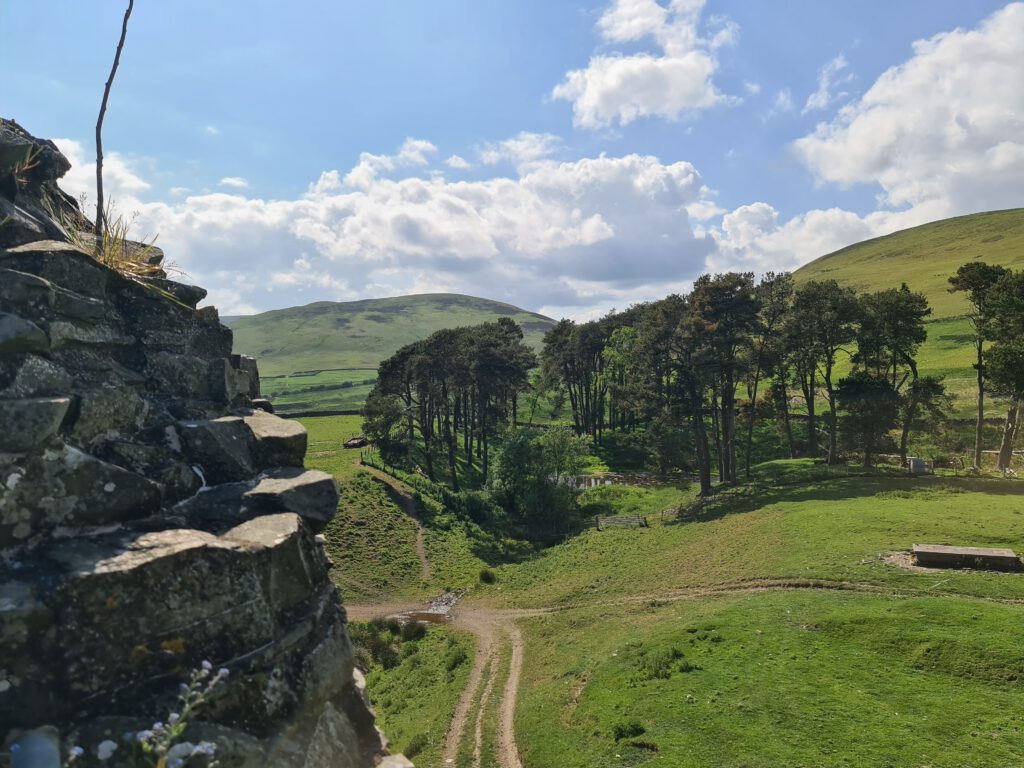
In 2005 restorations were undertaken to make the tower save and, in the process, it got cleared of vegetation. So, when you venture into the tower today what you will find is a spiral staircase leading to the top of the building. There are no floors left except of the roof which is only open where the staircase gets out into the open air, however, you can still see where the floors were once fixed in the walls.
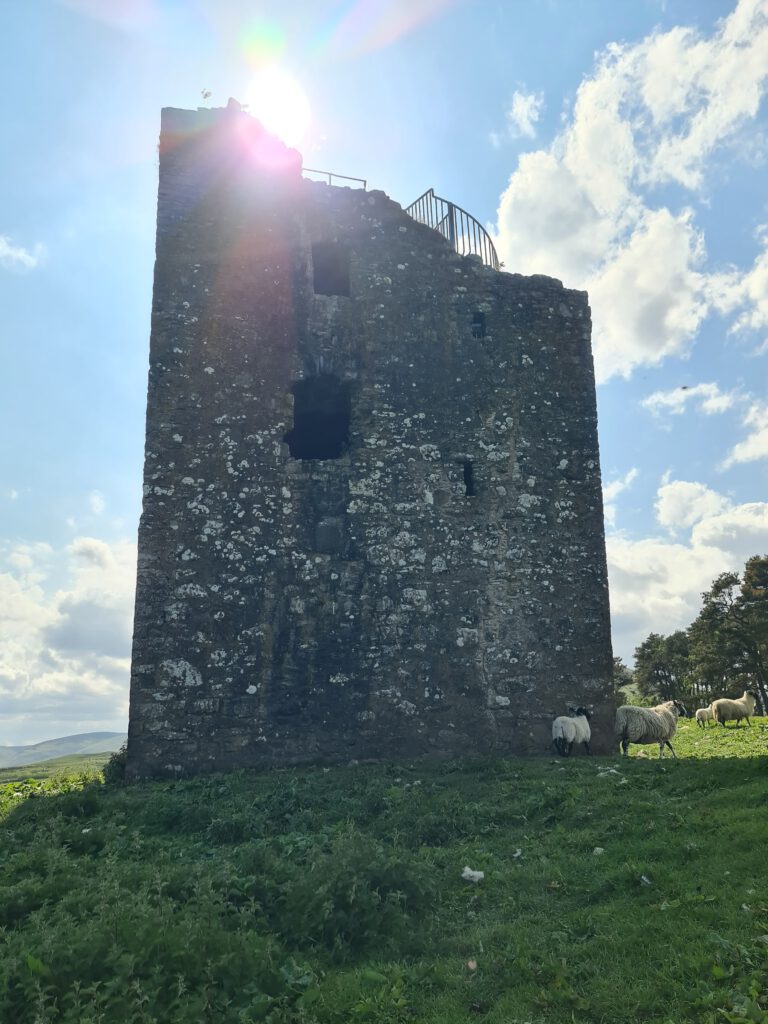
Of the original height of the tower is possibly only the attic missing and Dryupp Tower (another name) is an important example of medieval tower houses which survives to this day to an extend that very few other tower houses in Scotland do, this makes it a building of national importance, today and for many generations to come.
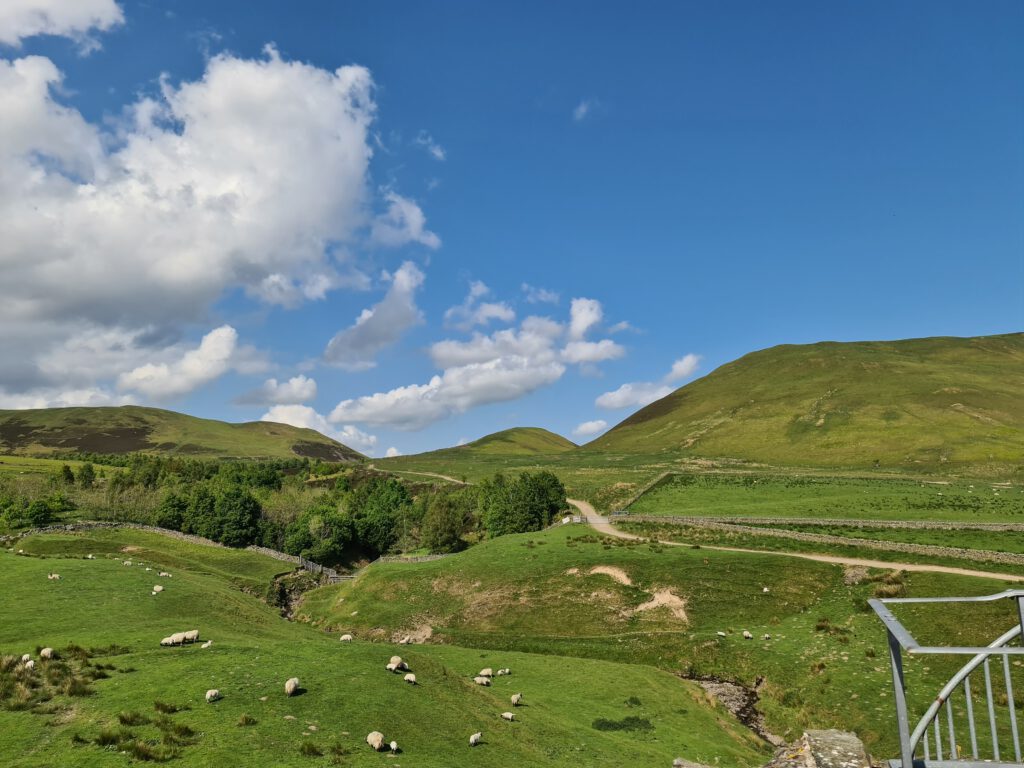
What’s most special about the tower for sure is that there are clear signs of enclosures on the outside of the tower, those enclosures and the whole area which once were protected by the tower show a lot of how many similar buildings could be still looking today if the time would have played in their favour as well. This also offers an incredible opportunity to increase the knowledge about live in the past.
In the lower part of the tower there are no windows but only small gun loops which were clearly showing the defensive purpose it once served, however, up on the upper floors there are windows and seats in their recesses.
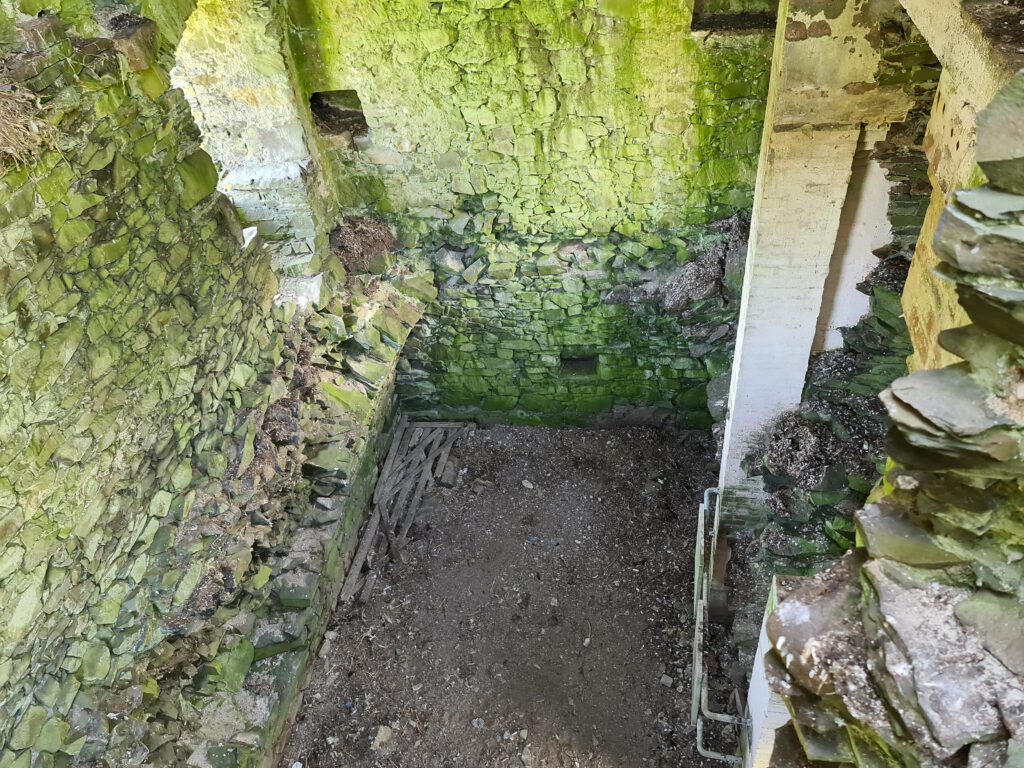
From the top of the tower, you have beautiful and wide-reaching views over St Mary’s Loch and the ancient county of Selkirkshire, the valley of the Yarrow Water and the Dryhope Rig, right above the tower. But don’t just follow the view to the distance, take a closer look at the roof and spot the remains of what once was a shelter for a watchman, including a shelf for his lamp.
Back in the day there was a courtyard, enclosed by a curtain wall and although you can’t see anything of that wall anymore it still is incredible to imagine how all of this once looked.
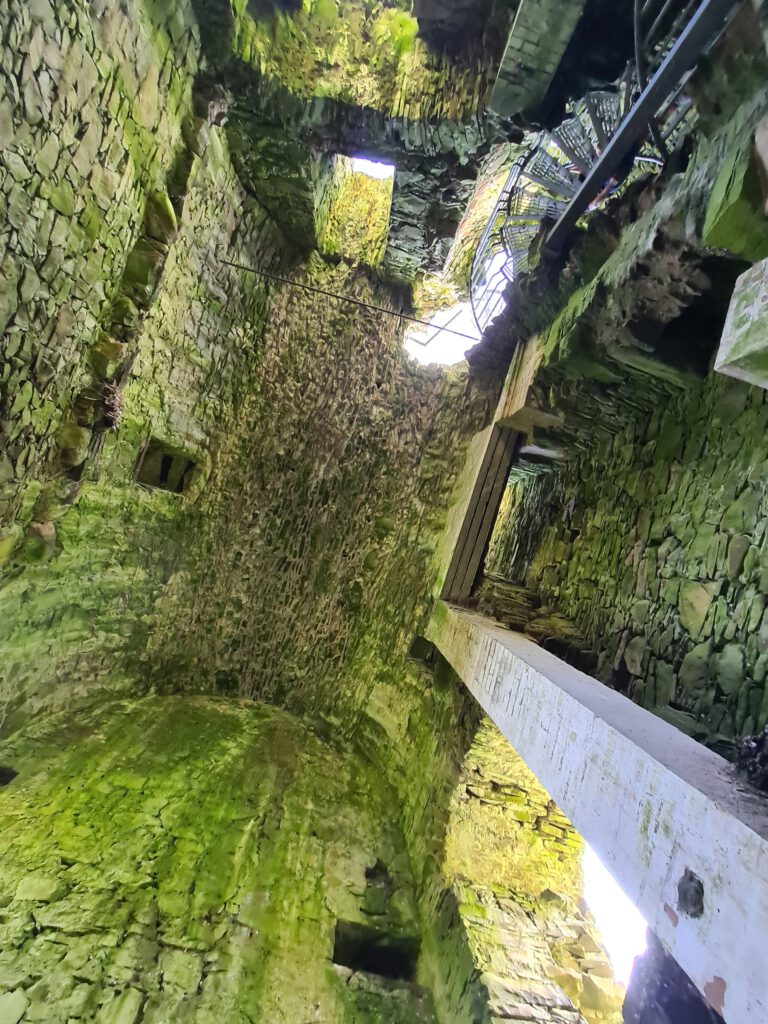
During the restorative work being undertaken, there was a bridge installed over the deep ravine of the Dryhope Burn. You can easily reach the tower by walking along the Southern Upland Way or on the circular around St Mary’s Loch, from both routes it is only a small detour to reach Dryhope Tower and you don’t even have to go through the busy farm, however, this track is possible as well.
